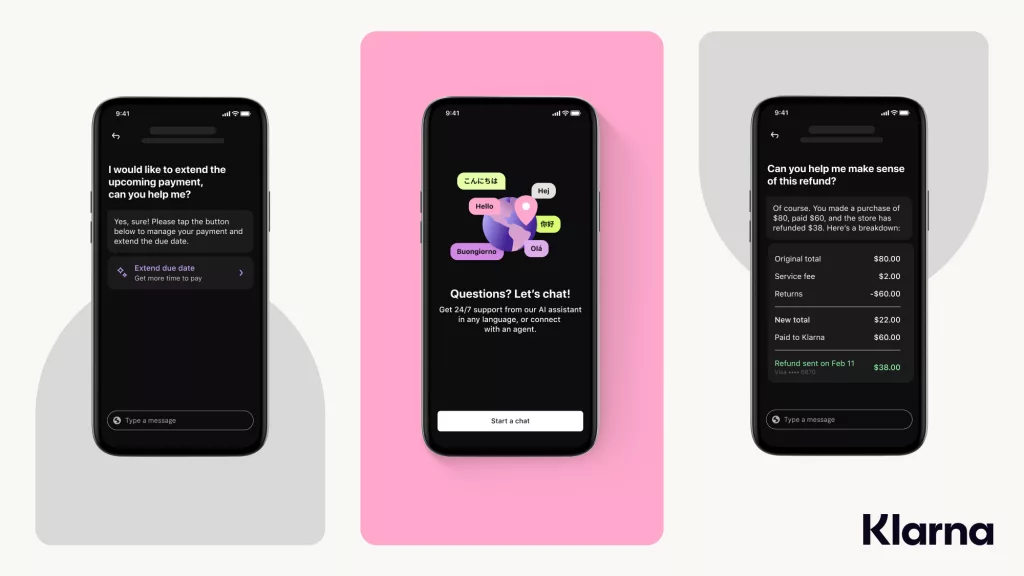Content
Definition of AI in customer service
Excellent customer service is a crucial factor for a company’s success. Customers expect quick and efficient solutions to their concerns. However, traditional customer service models often reach their limits, especially during periods of high demand.
AI refers to technologies that enable machines to display human-like intelligence. In customer service, this means tasks such as answering customer inquiries, solving problems, and providing information can be automated and efficiently executed.
But how can companies successfully implement AI in customer service, and what should they pay attention to? We will explore these and other questions in the following article. Let’s dive in!
Advantages of AI in customer service
The use of AI in customer service offers several more or less obvious benefits. These should be seen mainly as potentials, with actual impacts strongly dependent on the specific company and practical implementation. In theory, these include the following examples:
Increased efficiency and cost reduction
AI systems can handle large volumes of inquiries simultaneously, leading to significant efficiency gains. This reduces operating costs, as fewer human employees are needed. According to a McKinsey study, companies can save up to 40% of their operating costs by using AI in customer service.
24/7 availability
AI-driven systems can operate 24/7, meaning customers can receive support at any time. This has the potential to greatly improve customer satisfaction, as they are not limited to regular business hours and can get help whenever they need it.
Personalization of customer interactions
AI in customer service can personalize interactions by analyzing customer preferences and behaviors. This personalized service with AI significantly increases customer satisfaction and loyalty.
Error reduction and consistent service quality
AI can reduce error rates through consistent and accurate responses, ensuring consistently high service quality. This leads to higher customer satisfaction and fewer complaints.
Applications of AI in customer service
When thinking about AI in customer service, chatbots often come to mind first. Indeed, AI chatbots can be a step towards using artificial intelligence in customer service, but they are not the only option. The possibilities are varied and extend across all customer touchpoints and needs.
Chatbots and virtual assistants
Chatbots, as mentioned, are one of the best-known applications of AI in customer service. They can answer simple queries and handle routine tasks, relieving human employees. They are especially suitable for first-level support, where frequent inquiries are common.
Automated email responses
AI can also be used to automate email responses, ensuring quick and precise replies to customer inquiries. Similarly, it is possible to automate responses on other communication channels, such as messenger platforms (WhatsApp, Telegram, etc.).
Speech recognition and voice assistance
Speech recognition technologies allow customers to speak with customer service and receive quick responses. This is particularly useful for customers who prefer to communicate their concerns verbally. This can also be integrated with chatbots or other communication channels.
Data analysis and customer behavior
AI can analyze large amounts of data to identify patterns in customer behavior and derive actionable measures. This enables proactive and personalized customer care. For example, user feedback can be evaluated using sentiment analysis.
Proactive customer care
By analyzing past interactions, AI can proactively identify potential issues and offer solutions. This improves customer satisfaction and reduces the number of recurring inquiries.
How is AI used in customer service in practice?
Overview of common AI technologies
We assume that interactions between companies and customers will increasingly take place through AI-based technologies. Different technologies such as Natural Language Processing (NLP), Machine Learning (ML), and Language Models (LLMs) play a central role in implementing AI in customer service. Depending on the desired results, both pre-made solutions and customized, highly individualized processes can be used. There are virtually no limits in developing AI solutions.
Case study: AI in customer service at Klarna

Klarna, a leading fintech company, has successfully integrated AI into customer service. The results published after about a month of practical use caused quite a stir.
According to Klarna, their AI assistant automated two-thirds of all customer service interactions. The AI assistant conducted 2.3 million conversations in a month, taking over the work of 700 full-time employees. This led to a 25% reduction in recurring inquiries and a significant improvement in customer satisfaction. Klarna projects this efficiency increase will improve profits by 40 million USD in 2024.
These impressive numbers show the potential of AI in customer service. However, the actual impacts depend heavily on the specific company and implementation. Nonetheless, the results indicate a promising direction.
Challenges and solutions
Alongside the advantages of using AI in customer service, challenges also arise. We briefly introduce some of the most important issues to consider.
Data protection and security
Handling sensitive customer data requires strict data protection measures and security protocols. Companies must ensure that their AI systems comply with applicable data protection laws and are regularly checked for security vulnerabilities.
Integration into existing systems
Seamlessly integrating AI solutions into existing IT infrastructures can be challenging but requires careful planning and execution. It is crucial that the new systems are compatible and work smoothly with existing technologies.
Acceptance by employees and customers
Introducing AI in customer service requires acceptance from both employees and customers. Training and transparent communication can help alleviate concerns and increase acceptance. More and more companies believe that training and continuous education are critical for the success of AI implementations.
Continuous improvement and maintenance of AI systems
AI systems must be regularly monitored and improved to remain effective and adapt to new challenges. This requires continuous monitoring and adjustment of algorithms and regular updates.
Conclusion
The future of AI in customer service looks promising. With the ongoing development of AI technologies, further innovations are expected to continuously improve and personalize customer service. Experts estimate that the global market for artificial intelligence will grow to over 407 billion USD by 2027, indicating that more and more companies will invest in these technologies.
AI in customer service offers numerous advantages, including increased efficiency, cost reduction, and improved customer satisfaction. Companies that successfully integrate AI can gain a significant competitive advantage. As Klarna’s example shows, implementing AI in customer service can already lead to significant efficiency gains and cost savings, while simultaneously enhancing customer satisfaction.
